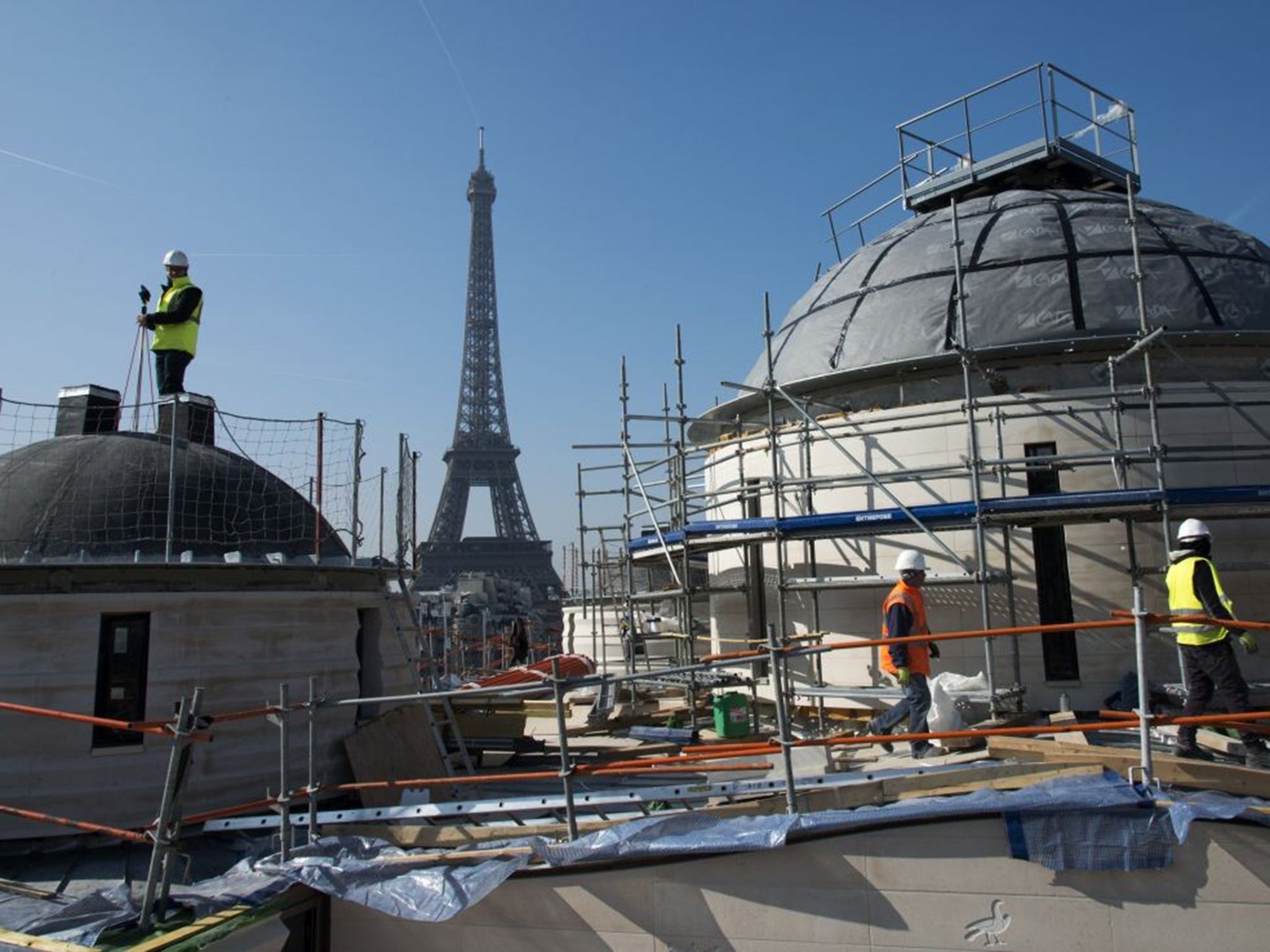Paris welcomes Kremlin-funded Russian Orthodox cathedral - as French court tries to seize its assets
Nicknamed ‘Saint Vladimir’s’, the new church serves Putin’s image-making aims of Russia as a major power

The familiar riverscape of Paris – elegant, low buildings and a large metal tower, will be transformed today into something closer to Moscow-sur-Seine.
A large golden dome, the first of five, will be winched into place on a new Russian Orthodox cathedral under construction on the Quai Branly, close to the Eiffel Tower.
The cathedral, officially called Sainte-Trinité, but nicknamed “Saint Vladimir’s” after the Russian President, has been the subject of political, financial and architectural disputes for eight years.
Despite an attempt in a French court on Thursday to seize all assets on the site, the €170m (£132m) project – entirely funded by the Kremlin – is due to be completed by October.
The cathedral, which will also house a cultural centre and a school, is a symbol of Moscow’s determination to project a powerful image of a resurgent and spiritually strong Russia. There is already a Russian orthodox cathedral in Paris but it remains under the control of expatriates descended from the White Russians who fought the Leninist Revolution a century ago next year.
The French intelligence services objected that the new cathedral might serve Moscow’s aims in a more practical way. They have, according to reports in the French media, surrounded the building with jamming devices to prevent electronic surveillance of nearby government offices.
Former President Nicolas Sarkozy intervened personally in 2008 to ensure that Russia could buy and develop one of the most prestigious sites in the French capital. One of the other candidates to take over the former French Met Office site was the Saudi Arabian government.
Since then, there have been several arguments over the cathedral – notably the un-Parisian nature of its five, traditional bulb-shaped domes, which will decorate the left-bank of the Seine between the Eiffel Tower and the Invalides. Such disputes have been mild compared to the unholy stink that might have been raised by the French right if the cathedral had been a Saudi-funded mosque.
It was, in fact, the centre-left former Parisian mayor, Bertrand Delanoe, who objected in 2012 to the first, garish and uncompromisingly Russian design. Mr Delanoe complained that this “ostentatious pastiche” was “utterly inappropriate for the site”. The cathedral was redesigned under the supervision of the French architect Jean-Michel Wilmotte.
The final version, part modern, part traditional, includes typically Parisian masonry with the same Burgundian stone used in the four plinths of the Eiffel Tower. Mr Wilmotte said: “This is an orthodox church in Paris not in St Petersburg. We wanted to ‘Parisianise’ it.”
The new design retains, however, the five golden domes. The first – cast in a Breton shipyard, 12m high, 11m in diameter and weighing 8 tons – will be placed on the building on Saturday, with the head of Vladimir Putin’s private office, Alexandre Kolpakov, among those attending.
Despite the freeze in Russian-European relations since Moscow’s annexation of the Crimea two years ago, President François Hollande has, like his predecessor, gone out his way to smooth the way for the Orthodox cathedral.
A French diplomat who followed the saga was critical, telling Le Monde: “There was nothing wrong with building a new church but nobody wanted to confront Russia’s ulterior motives for creating what will inevitably become a symbol of Russian power in the heart of Paris.”
Jean de Boishue, a former adviser to Mr Sarkozy’s Prime Minister, François Fillon, said the former president saw the cathedral as a building block in a special Franco-Russian relationship. “It was Realpolitik – the same impulse which led France to make a deal after the Georgian war [in 2008] to sell two Mistral warships to Russia,” he said. The deal to sell the Mistrals was revoked by President Hollande as part of the post-Crimea EU sanctions on Russia. The cathedral was not.
Michel Eltchaninoff, author of Dans la tête de Vladimir Poutine (Inside the head of Vladimir Putin), said: “Holy Russia has always been used as a tool of foreign influence. [The cathedral] is a seductive statement of power, imposed by a country which boasts of its Christian roots on the capital of a secular state judged (by the Russians) to be enfeebled by multiculturalism and spiritual amnesia.”
Join our commenting forum
Join thought-provoking conversations, follow other Independent readers and see their replies
Comments